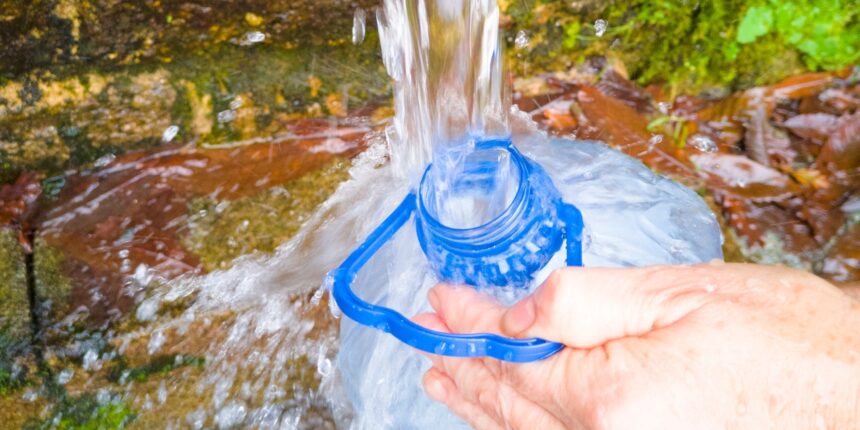To the uninitiated, the phrase raw water might seem redundant. What is water if not the most plain and elemental substance? As of late, though, the term has come to refer specifically to unfiltered, unboiled, untreated H2O, mostly from springs—which raw water proponents claim is awash with unique health benefits (like extra mineral content and fewer chemicals). So much so that some even started bottling and selling the stuff a few years back, and for no small price at that. Buoyed in part by a groundswell of opposition to government health practices, the push for raw water is bubbling to the surface yet again. But let us be clear: You don’t want to ride this wave.
“Part of the appeal is based on the fallacy that if Mother Nature made it then it must be good for you,” William J. Sullivan, PhD, Showalter professor in the department of microbiology and immunology at the Indiana University School of Medicine, tells SELF. But of course harmful things like arsenic, poison ivy, radioactivity, and earthquakes are also nature-made, he says. And even when it comes to resources that should theoretically be safe, like a flowing stream, there’s the simple reality that today’s world is “not pure,” Marion Nestle, PhD, a molecular biologist and Paulette Goddard Professor of nutrition, food studies, and public health, emerita, at New York University, tells SELF. Meaning, no water source, no matter how remote, can be guaranteed to be pristine or totally uncontaminated. (Hence why it’s not advised to just drink from any stream or pond you find in the wilderness on a hike, and filtering or boiling water first is a must.)
There’s also the related misconception that things altered by humans or industrialized are inherently bad—that they’ve had natural benefits stripped out or synthetic harms added in—which may push some toward raw water if only to avoid tap. It’s the same reason certain folks might bypass pasteurized milk for the raw version, Dr. Sullivan says: Some believe “that the very methods employed to make these liquids safe for consumption are somehow hazardous to our health.”
Likewise, an increasing number of folks oppose government health interventions on the basis that they’re overstepping (despite the science behind them)—a movement called “health freedom” that’s picked up steam since Robert F. Kennedy Jr., one of its longtime supporters, was chosen by president-elect Donald Trump to head the Department of Health and Human Services. Vaccines, COVID protocols, pasteurization, and yes, water treatment are among its targets.
But the truth is, the passage of the Safe Drinking Water Act (SDWA) in 1974 and its requirement that water in all public systems in the country be monitored and treated to meet safety standards has been an “enormous public health achievement,” Dr. Nestle says, granting us some of the safest drinking water in the world. Read on to learn why there’s plenty of risk—and zero benefit—to forgoing tap for untreated sources.
Drinking raw water (that hasn’t been tested and treated) can be super risky.
A whole bevy of harmful bugs and toxic substances can be drifting around in any untreated water and make you sick if you consume them. Microbes generally infiltrate natural water by way of—brace yourself—animal poop and pee. “Water sources may look pristine, but what you don’t see are animals using it as their bathroom as well as the decaying carcasses of fish, frogs, or other animals under the surface,” Dr. Sullivan says. And if there’s a chicken, beef, or dairy farm upstream? You up your chances of germy water, Dr. Nestle notes. Just a few of the common water-borne buggers you might encounter: bacteria like E. Coli and Salmonella and viruses like rotavirus and norovirus, all of which can cause a host of GI woes (like diarrhea and vomiting), as well as diarrheal parasites like Cryptosporidium and Giardia, and the virus hepatitis A, which causes liver infection.
Read the full article here



